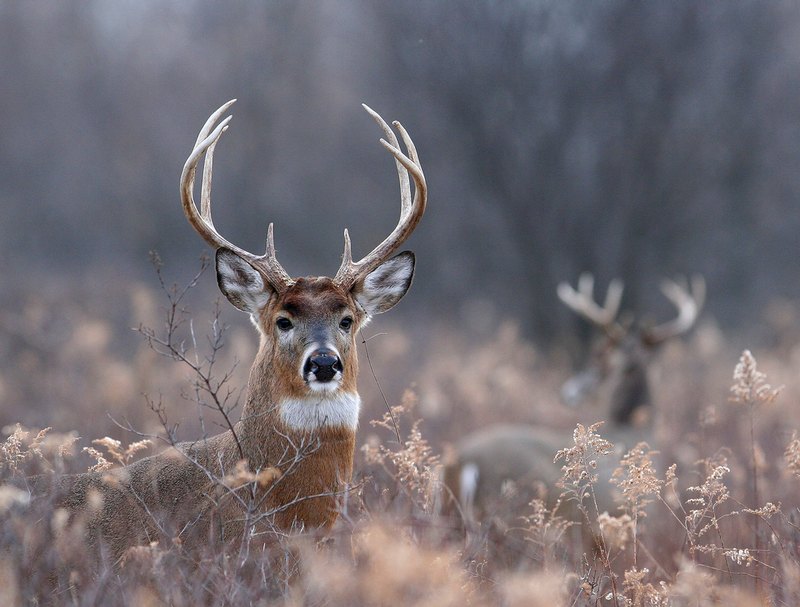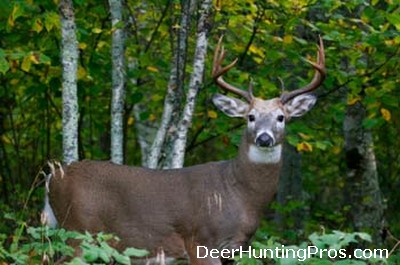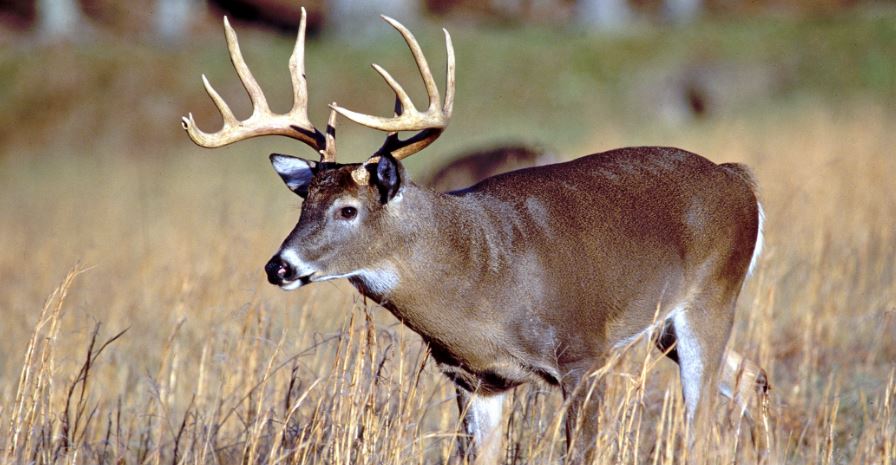Kentucky’s 2016-17 deer season kicks off the first Saturday in September with the start of the 136-day archery season. Anticipation has been building for months. Many archery hunters in Kentucky will spend the last long weekend of summer getting an early jump on fall.
“Everything right now points toward another good season,” said Gabe Jenkins, deer program coordinator for the Kentucky Department of Fish and Wildlife Resources. That is welcome news following on the heels of record deer harvests.
Hunters in Kentucky established a new benchmark last season by taking more than 155,000 deer. It was the third record harvest in the past four seasons and included 55 bucks from 40 counties documented by Kentucky Fish and Wildlife that met the Boone and Crockett Club’s minimum entry score for its awards book.
“Our deer hunting in Kentucky is better than it’s ever been,” said Steve Beam, wildlife division director for Kentucky Fish and Wildlife. “We’re harvesting record numbers of deer and our production of large-antlered bucks is completely incredible. We’ve really hit the scene in the past 10 years because of our quality white-tail,” Jenkins said. “That’s a product of good management, good habitat and being diligent about what’s being put on the landscape. With that, we still have to be good stewards.”
A state believed to hold fewer than 1,000 white-tailed deer a century ago now is considered one of the nation’s premier hunting destinations. The latest herd estimate – derived from harvest and age structure data – pegged the statewide population at more than 820,000 after the 2015-16 hunting season and before fawning this spring.
The archery season is just one facet. Crossbow, muzzleloader and youth deer hunting opportunities are part of the overall season framework. But it is the modern gun deer season in November that drives the harvest, accounting for 70 percent of the total harvest last season.
“We’ve been setting archery records nearly every year and every month, so we’re seeing more interest in archery hunting,” Jenkins said. “But we’re still a modern gun-dominated state and weather is the biggest key in that.”
The modern gun season opens statewide Nov. 12, 2016, and spans 16 consecutive days in Zones 1 and 2 and 10 consecutive days in Zones 3 and 4. There are 43 counties assigned Zone 1 status after the addition of Hardin and Webster counties this season. In another zone change, Marion County is now a Zone 2 county.
Herd health assessments are underway and results are not yet available from the annual statewide mast survey. Hunters should take into account the availability of hard mast as the season progresses.
“Traditionally, when you have good mast years, we usually see a decline in the harvest from the previous year mainly because of a change in feeding habits,” Jenkins said. “They’re not coming to corn feeders and they’re not coming to green fields. They’re in the woods.
“I don’t know what the mast results are going to show, but in speaking with our staff and seeing for myself in the field, it looked pretty good. We’ll see.”
Hunters must check the animals they harvest and can do that by phone at 800-245-4263 or online at fw.ky.gov. The telecheck process will include some new questions this year. Hunters checking an antlered deer will be asked to enter the total number of antler points that are at least 1 inch and indicate if the outside antler spread is less than or greater than 11 inches. Those checking an antlerless male will need to distinguish if it is a male fawn (button buck) or if the animal has already dropped its antlers.
The additional data will help biologists, Jenkins said.
“What we’re looking to do is obtain additional age data, something that indicates how old that harvested animal is,” he said. “For all of the population models that we do, we need to know approximate age in the harvest. Additional age data allows us to better predict the standing crop and the age of our herd. That in turn helps us be more efficient managers of the herd.”
Kentucky Fish and Wildlife owns, leases or manages more than 80 wildlife management areas across the state for public use. Some require a user permit, hold quota hunts or have special regulations for deer hunting.
“We’ve been able to add a significant amount of acreage in recent years,” Beam said. “As a result, hunters now have more high-quality public hunting opportunities across the state.”
The department is working with partners to further expand the amount of public land available for hunting. One recent addition is the new 2,900-acre Rockcastle River WMA in eastern Pulaski. Presently, it is closed to the public while Kentucky Fish and Wildlife makes improvements necessary for public use.
The Kentucky Hunting and Trapping Guide, available on the department’s website and wherever licenses are sold, is a valuable resource for hunters. It includes the full list of fall hunting and trapping season dates, summarizes hunting and trapping laws, and provides information about public lands hunting by region, youth hunting opportunities, hunter education requirements and quota hunts.
There are 30 quota hunts to choose from this year. New this year is an archery and crossbow only quota hunt at Big Rivers WMA and State Forest in Crittenden and Union counties. Hunters may apply for quota hunts via the department’s website or by calling 877-598-2401. The application period runs the entire month of September.
Hunters are reminded to ask and obtain permission before hunting on private property and to report game violations by calling 800-25-ALERT. Callers are asked for the county that they are calling about and forwarded to the nearest Kentucky State Police post, which dispatches a Kentucky Fish and Wildlife conservation officer.
“We’ve had a really wet spring and a wet summer so far with lots of food available. That just equals healthy deer,” Jenkins said. “Anecdotally, it looks good across the state. Our data also supports that assertion.”


